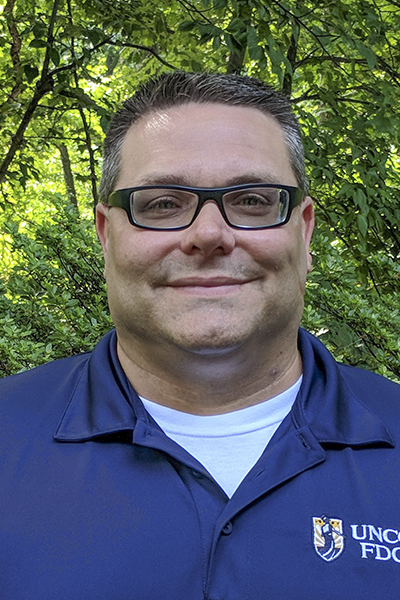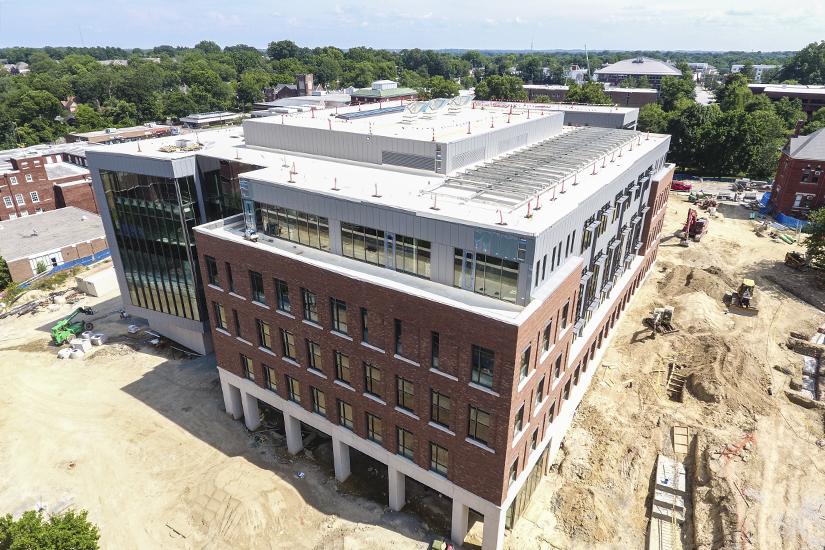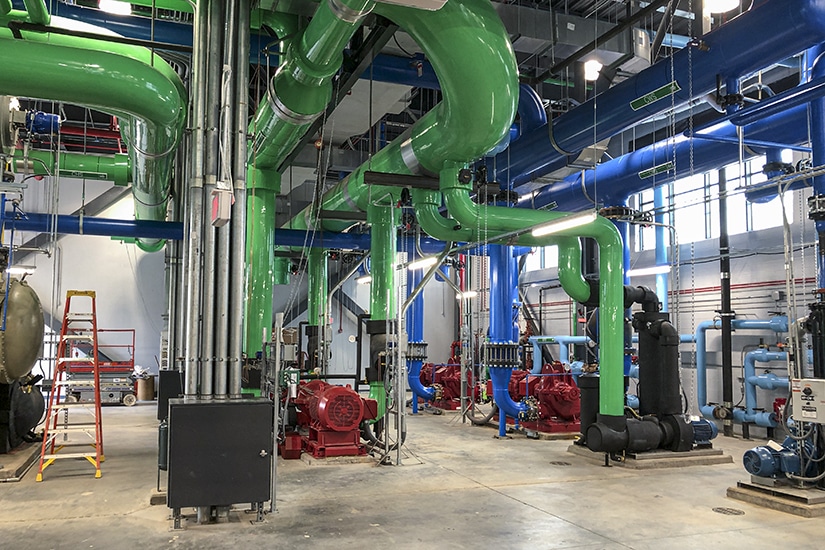|
Getting your Trinity Audio player ready...
|
Whether it is a $5,000 equipment installation project or a multimillion-dollar renovation project, Ken Pearce’s team is responsible for a majority of the construction and design that happens on the UNC Greensboro’s campus. Though the majority of their responsibilities fall under capital planning, design, construction, and policy writing, Pearce views his department members as a team of problem solvers.

Pearce’s team often acts as consultants for different departments across the university to help them achieve goals or define solutions for any planning issues they may encounter. “When departments come to us asking if they can do something—for example we recently were asked if we could convert some restrooms into gender-neutral bathrooms—we have to help those departments determine if the request is both functional and feasible,” explains Pearce, the director of facilities design and construction. Once that is determined, the team is able to flex its many areas of talent, expertise, and responsibility.
“We then generate cost estimates and present the information in a way that the space committee can understand the benefits or the hardships to the university if we do or do not perform a project,” he elaborates. “We are basically the holders of the UNC Greensboro master plan and how it is implemented on campus.” Which is why it is fitting that his team has undertaken the colossal $105,000,000 building project UNC Greensboro’s Nursing and Instructional building and South Chiller Plant.
One of the university’s priorities is the nursing program in its rapid growth. “We were actually running out of space to serve the needs of the nursing program. We did not have enough labs to support the chemistry and biology needs of the program,” Pearce says. A new building would not only be able to support current students, it would also allow the nursing program to admit more candidates and increase admission. The building will also support the needs of students in other programs—including chemistry and biology—where new labs and teaching spaces will provide new opportunities for research, instruction, and experimentation. In 2016, the North Carolina legislature passed the Connect NC Bond in which the UNC Greensboro’s STEM project was funded.

Prior to the project proposal, the nursing program was housed in a building upwards of 50 years old. “Everything was pretty outdated,” Pearce recalls. “The HVAC was old, and we were having trouble meeting the needs of the program. The building has asbestos—it was really time for us to make a change to drive the prospering nursing program forward.” The project was submitted, and it was subsequently approved as the university’s NC Connect bond project.
Unfortunately, with the onset of the COVID-19 pandemic, some progress to building plans slowed, but Pearce maintains a positive outlook on both the completion of the project and what it means for the nursing program. “With the coronavirus pandemic, it has just made it [even clearer] how important the nursing program is,” he affirms. “We are housing and educating those that will be sent to the frontlines to fight the virus, so it has become a priority to provide top of the line facilities and resources.”
Apart from some pandemic-related setbacks, Pearce aims for a smooth execution of the rest of the project, and his team plays an integral part in achieving that goal. “About two years back, we collected some feedback from clients on how we can best improve our projects and execution,” the director says, explaining that his team was initially more siloed. Clients would start with a design project manager, then midway through the project be transferred to a construction project manager.
“Clients were saying that they would get used to one person, then get passed off to another. They felt as if things were being lost in the shuffle,” Pearce says. “We wanted to provide smooth transitions, so we had to think of a solution.”

The director decided that it would be beneficial to divide his teams into different sections and to appoint one project manager to see projects from concept through completion. “We made the transition to a capital group, managing projects greater $300,000, and a noncapital group, managing project under $300,000. Our clients really appreciate it. We have really put an emphasis on partnering with our clients and having more open lines of communication,” Pearce says. He believes that this new arrangement has helped strengthen relationships with clients. “There’s more trust between the client and project managers, which has also been a great example of growth for the project managers,” he adds.
This arrangement has also fostered a learning culture between project managers and within our own teams. “As they work together, everyone is learning from one another to become more well-rounded,” Pearce says. “Each project manager has differing and varying strengths and sharing those strength throughout the team builds stronger, more diverse project managers.”
This is an area that particularly excited him as he desires to see his team members personally develop. “I want them to be the best they can be wherever they end up, preferably at UNC Greensboro or if they decide to take their talents and continue their careers at another institution.”


